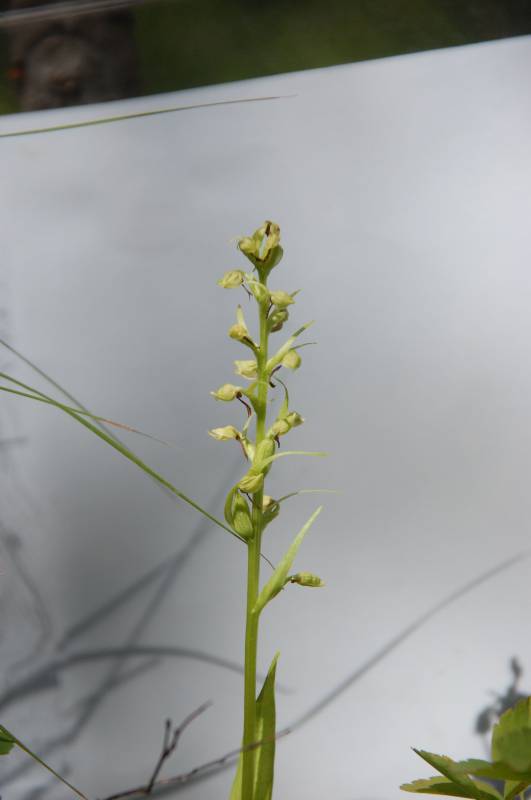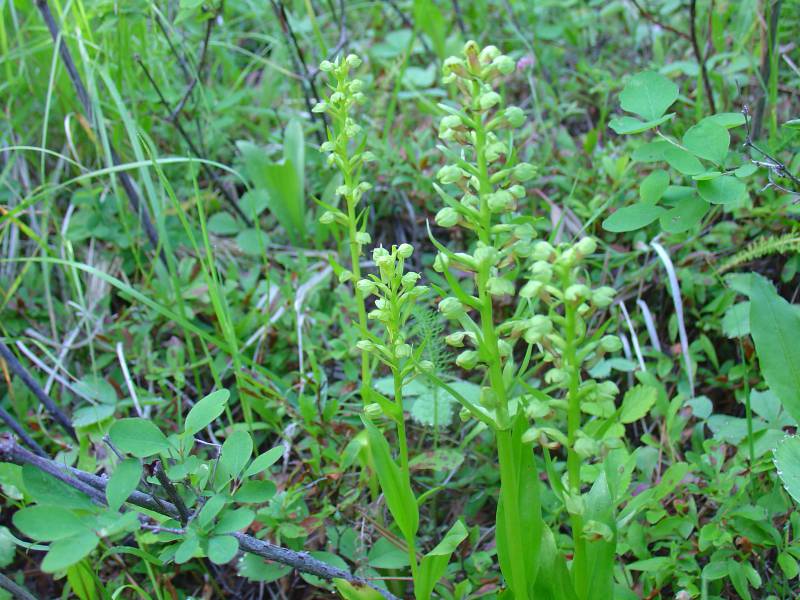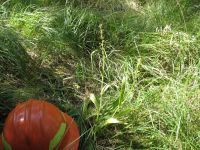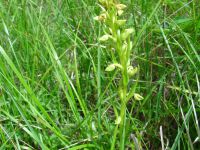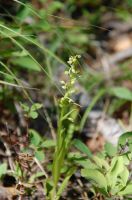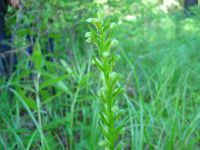Distribution: Known only from Okanogan County in Washington; Alaska to Washington, east to the Rocky Mountains, Great Plains, Great Lakes region, and eastern North America.
Habitat: Moist to wet meadows at moderate elevations.
Flowers: July-August
Origin: Native
Growth Duration: Perennial
Conservation Status: Threatened in Washington (WANHP)
Glabrous, somewhat succulent perennials to 80 cm, with palmately divided tuber-like roots.
Leaves 2 or more, alternate, sessile, ascending to recurved, blades nearest base obovate to oblanceolate, oblong-lanceolate mid-stem, 2-18 cm long and 1-7 cm broad, base sheathing, becoming bracts distally.
Inflorescence a racemose terminal spike, floral bracts significantly protruding; flowers generally green and tinged red-brown, resupinate; sepals ovate, 3-8 mm long and 2.5 mm broad, forming a hood over column; petals linear, 3-5 mm long and 0.5 mm broad; labellum extending downward beneath hood, notched or 3-lobed, lateral lobes larger than middle lobe, 3-10 mm long and 0.5-4 mm broad; spur sack- or pouch-shaped, insignificant; pollinaria 2; pollinia 2; viscidium located within membrane; stigmas concave, 2-lipped.
Capsules, ascending, 7-14 mm long and 4-5 mm broad, ellipsoid.
Publication: Lindleyana 12(3): 129. 1997.
Coeloglossum viride (L.) Hartm. var. virescens (Muhl.) Luer
Habenaria viridis (L.) R. Br. [HC]
Habenaria viridis (L.) R. Br. var. bracteata (Muhl. ex Willd.) A. Gray [HC]
Habenaria viridis (L.) R. Br. var. interjecta Fernald
Satyrium viride L.
PNW Herbaria: Specimen records of Dactylorhiza viridis in the Consortium of Pacific Northwest Herbaria database
WA Flora Checklist: Dactylorhiza viridis checklist entry
OregonFlora: Dactylorhiza viridis information
E-Flora BC: Dactylorhiza viridis atlas page
CalPhotos: Dactylorhiza viridis photos

